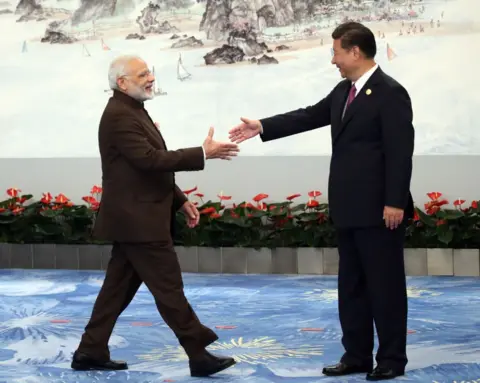The Bollywood film "Mrs" has ignited a significant conversation on gender roles and domestic duties, driving home a harsh reality: women in India, even in educated households, often find themselves trapped in the cycle of unpaid domestic work. The film's protagonist, married to a gynaecologist, embodies the struggles of many women, whose aspirations are frequently overshadowed by societal expectations and quiet coercion.
This cinematic exploration parallels troubling findings from a recent government survey, which unveils that Indian women dedicate over seven hours daily to unpaid domestic and caregiving tasks—more than twice the time their male counterparts spend on similar chores. Specific data indicates women spend approximately 289 minutes daily on household tasks and 137 minutes on caregiving, compared to men's 88 and 75 minutes, respectively. Moreover, the survey illustrates that women engage less in paid work and self-care activities.
The absence of significant change in this landscape is particularly disconcerting, given that similar results were reported in the previous survey conducted six years ago. Despite initiatives aimed at women's empowerment, the persistence of rigid domestic roles indicates a stagnation in progress. India's Time Use Surveys (TUS), which chart how individuals spend their time, have unearthed these insights. The inaugural survey was published in 2019, with an updated version just released.
While the latest TUS indicated a slight reduction in unpaid domestic work time—down by 10 minutes for women aged 15 to 59—and a marginal increase in employment participation, economists argue these shifts do not necessarily reflect meaningful progress. Ashwini Deshpande, an economics professor at Ashoka University, contends this data must be examined alongside India's Female Labour Force Participation Rate (FLFPR), which has seen a rise from 23% in 2017-2018 to 37% by 2022-2023. Deshpande suggests this increase is driven not only by expanding job opportunities but also by economic pressures, as women increasingly seek to supplement household incomes while continuing to manage significant unpaid workloads.
Globally, women are similarly burdened with the lion's share of household responsibilities, yet the divide is notably pronounced in India. On average, women worldwide spend about 2.8 hours more than men on domestic tasks; for Indian women, that figure jumps to nearly four hours. This disparity is entrenched in India's patriarchal societal structure, which perpetuates strict gender norms even among the educated strata.
Despite the significance of the film "Mrs," it has not been without controversy. Many men's rights groups have criticized it for allegedly perpetuating negative portrayals of traditional joint family structures, while some dismiss its premise entirely. Comedian Kajol Srinivasan, who has shared her father's experience of taking on household duties, highlights how such stories resonate deeply with societal truths. Her father's initial enthusiasm was soon met with the stark reality of housework's tediousness, confronting a power imbalance that often privileges the primary breadwinner.
As "Mrs" sheds light on these pressing discussions, it remains evident that societal change is slow. Nonetheless, conversations spurred by the film, such as the fundamental question of who is truly responsible for household chores, suggest a growing awareness and a potential pathway to transformation in gender roles and domestic responsibilities in India.






















